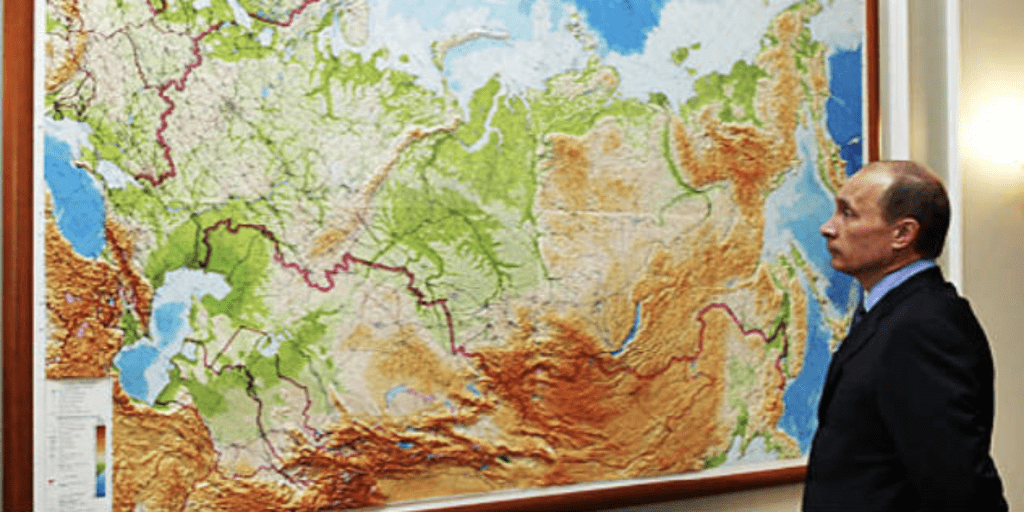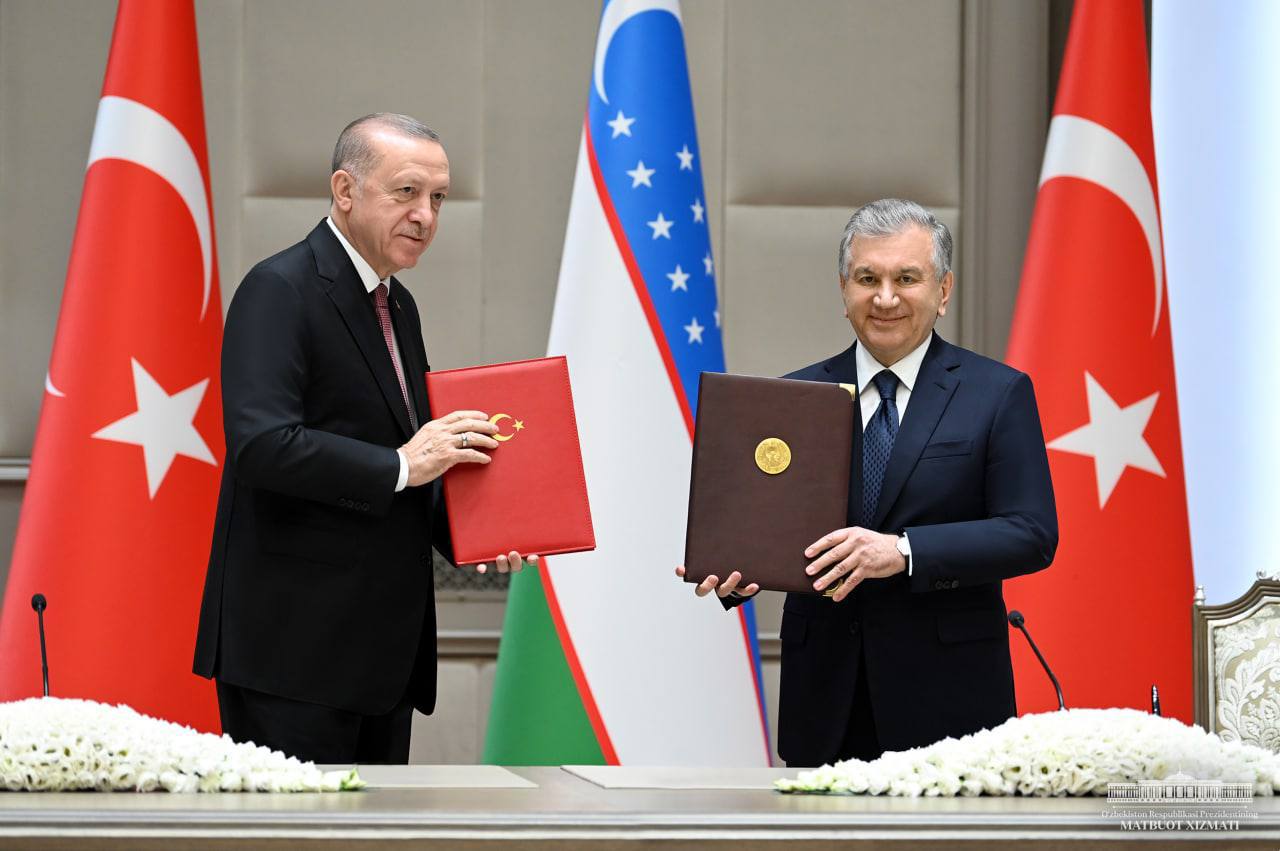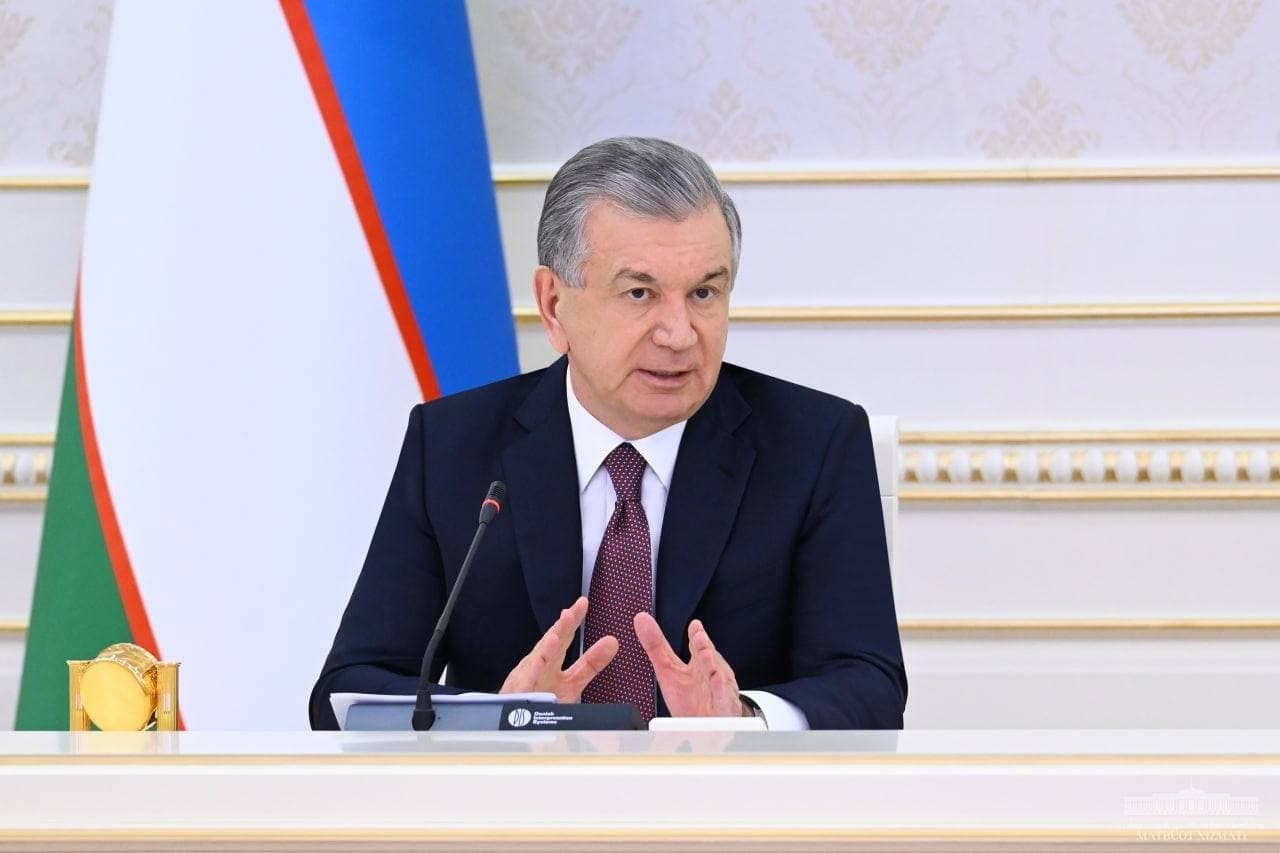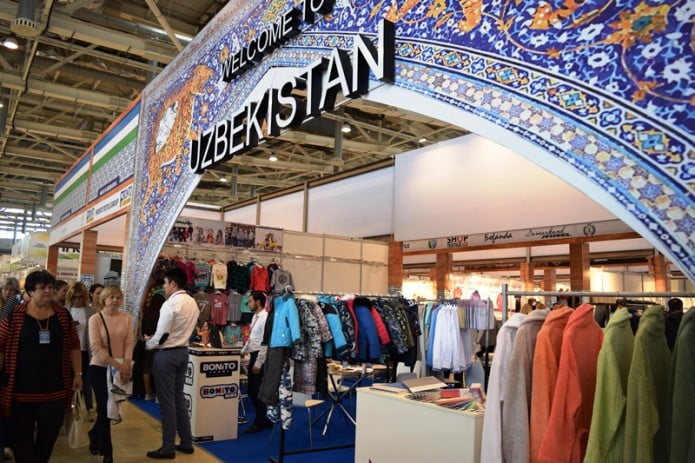
In Q1 2021, Uzbekistan exported $637.7 million worth of textile products to 54 countries.
The figure is more by $174.9 million compared to the same period last year, the Statistics Committee said.
According to the committee’s report, a total of 5,080 textile enterprises produced 11.5 trillion soums worth of goods during the period under review.
In the total volume of items produced by textile enterprises in the country, Fergana (15%), Kashkadarya (9.8%) and Tashkent (9.1%) regions have the highest share.
In 2020, Uzbekistan exported textile products for $1.9 billion to 70 foreign countries.
Today, rapid growth rate of manufacturing textile and clothing products is observed: in the last four years, the production has increased 2.8 times in nominal terms.
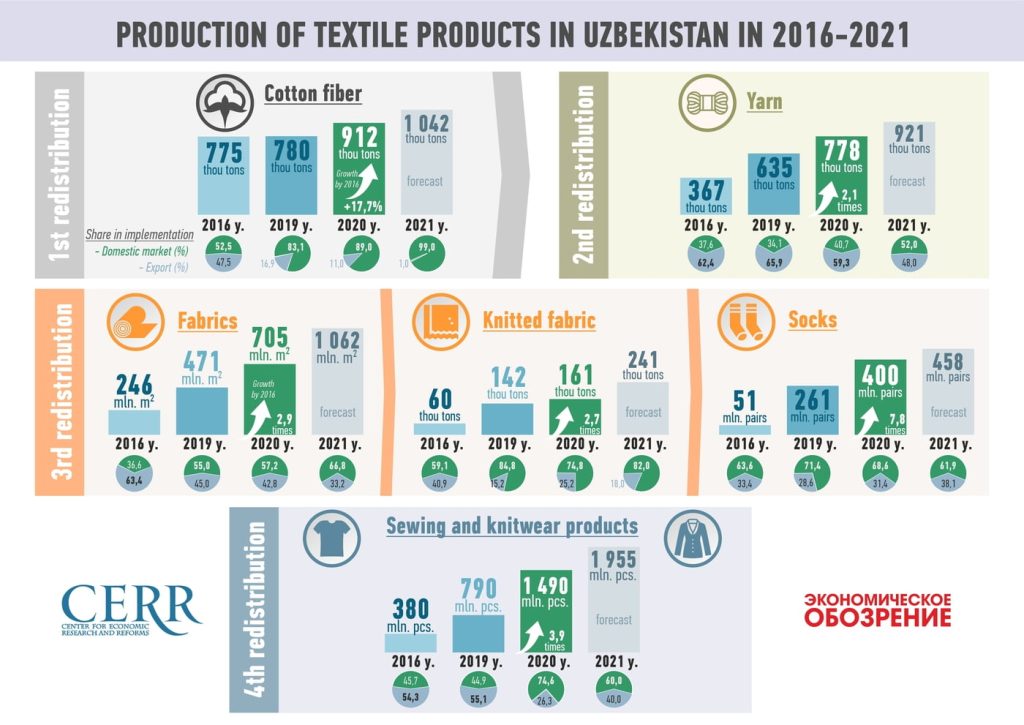
Infographics: Manufacturing Textile products in Uzbekistan in 2016-2021infographics updated
The production volume of cotton fiber increased by 17%, yarn - by 2.1 times, fabric - by 2.9 times, knitted fabric - by 3.2 times, socks - by 7.1 times, sewing - by 5.6 times, knitwear - by 3.5 times.
The share of the textile industry in the gross industrial output of the country increased from 7.5% in 2016 to 12.4% in 2020, which indicates that it is growing faster than other sectors of the economy.
Significant structural changes have also taken place in manufacturing of textile and clothing products: moving away from sales of primary products with low level of processing to the manufacturing of finished products with high level of processing.
When the revenue of yarn was 52% of the total industry revenue in 2016 followed by the continuous growth of the yarn production and sale, its production shows an increase by 38% and the revenue increased by two times in 2020.
Simultaneously, the share of Tier 4 products in the total revenue of the industry increased from 32% in 2016 to 42% in 2020.
Furthermore, the share of Tier 3 products increased from 16.5% to 19.4%. All together means that the industry is accelerating the production of raw materials and semi-finished products, reorienting the manufacturing of products intended by the final consumers.
The industry continued to grow rapidly in 2020 and 2019 at relatively high rates. For example, the production of knitwear increased by more than doubled during the year, garments and fabrics increased by almost 50%, and hosiery by 53%.
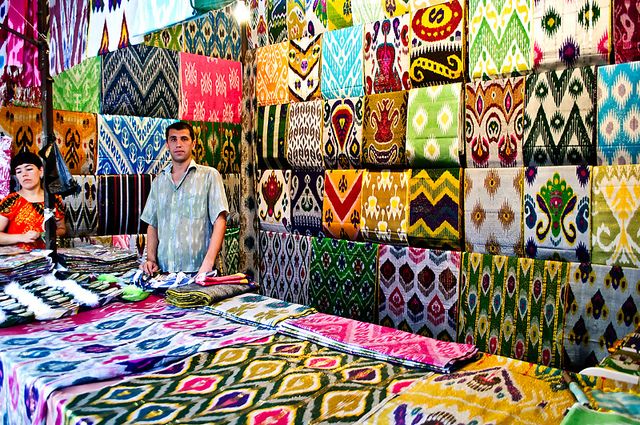
In addition, it should be noted that the coronavirus pandemic, on the other hand, led to a decrease in demand for clothing, and at the same time a sharp increase in the demand for various protective fabrics, such as masks and coveralls. The increase in demand for textiles due to health care will offset the decline in demand for other goods and create new opportunities for industrial development.
Here you can read a general overview of the development of the textile industry in Uzbekistan in 2017-2020.
By Sher Karimov
